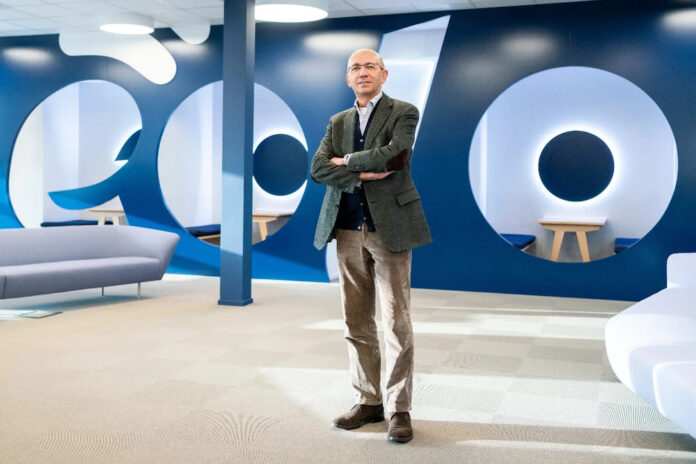Freeing up more mmWave spectrum will enable wireless providers to reach 1Gbps speeds
If Italy is to hit its ultrabroadband targets outlined in its 1 Giga Italy Plan by 2026, it needs to embrace fixed wireless for almost 6m households or risk perpetuating the city-rural broadband divide.
The claim was made in a report by The European House – Ambrosetti, commissioned by FWA provider Eolo, found that only a combination of FTTH and FWA will make it possible to fill the urban-rural connectivity gap by 2026 but that by doing so, overall GDP could lift by 3.5%.
Although that number seems a crazy amount, it breaks down like this: if all the Italian provinces reached an ultra-broadband subscription rate equal to that of the province of Milan, the country’s GDP would grow by +3.5%, around €69bn, while the average productivity per worker it would increase by €203 per year.
The report claims wireless technology is strategic for connecting 15.9% of real estate units (5.8 million) in Italy. Focusing on FWA technology to complement fibre across these 5.8m would generate around €3bn in efficiency benefits – mainly because it is so expensive to roll out fibre in rural areas.
Ensuring more widespread access to ultra broadband would also be an enabling factor for inclusive growth. Ambrosetti calculated that in areas without fast connectivity, 45.5% of citizens are at risk of unemployment for long periods, compared to 6.3% of those in areas with ultra broadband.
“In the European connectivity framework, Italy presents delays in infrastructure coverage and service subscription, especially with reference to connections above 100Mbps, which are reflected in lower navigation speeds,” said The European House – Ambrosetti managing partner and CEO Valerio De Molli. “Furthermore, Italy presents profound territorial differences in terms of navigation speed, between the different provinces and between urban and rural areas.”
“The delay is due to the difficulties in implementing public investment [via the National Recovery and Resilience Plan] and the lack of incentives for private investment. However, Italy is aware of how strategic this match is and has set itself the ambitious goal of covering the entire national territory at 1Gbps by 2026, anticipating the EU’s requests,” he said.
“To accelerate and reach the finish line, it is necessary to adopt a principle of technological neutrality, that is, to use the best technology available based on the characteristics of the territory and the objective to be achieved,” he added. “Fixed Wireless Access, with its speed of implementation and low costs, can be the key to bringing connectivity to the territories most difficult to cover with fibre, to reach the PNRR targets and place Italy among the top countries at European for coverage and quality of services.”
Accelerate wireless by opening up 26GHz
Naturally, Swiss-based Partners Group-owned Eolo would champion the wireless cause, but its new CEO Guido Garrone insisted backing fixed wireless was also good for the country.
“Eolo boasts undisputed leadership in the application of wireless technologies, gained thanks to development of its FWA network, carried out following significant investments and specific know-how obtained in 20 years of work in the field,” said Garrone [pictured above]. “To allow this technology to express its maximum potential, it is essential to proceed quickly with a reallocation of the 26 GHz band.”
He added: “I hope that this process will take place through competitive procedures that enhance the operators who have demonstrated over the years that they make efficient use of the allocated spectrum and who have the assets and skills to contribute to achieving the country’s connectivity objectives.”
Italy was the first country in Europe to auction 5G mmWave spectrum. The multi-band auction ended in October 2018 with 1000 MHz in the 26GHz band being assigned to five MNOs. The licences are valid until 2037. Italian regulator AGCOM adopted a “club use” model where licensees can share 26GHz spectrum on a geographical basis when frequencies are not being used.
Garrone was recently appointed sole CEO of the company after a period of co-CEOs. He was one of the founding partners of Fastweb, CTO and CIO of Swisscom, an Open Fiber director and held leadership roles in Metroweb. The other co-CEO, long-serving Daniela Daverio, will remain as an advisor.
Earlier this month, Eolo boosted its wireless broadband packages to 300Mbps – working also with partner Open Fiber on fibre offers – stating it was able to do so because of its long history of mmWave R&D.
Intracom deal
Eolo recently announced a major network upgrade, signing a “multimillion expansion contract” with its long-term Greek vendor Intracom for its 28GHz P2MP WiBAS G5 dual-BS base stations which will double the subscribers to 240 and deliver three times the throughput compared to the previous generation devices. The current FWA network has more than 4,100 BTS (radio repeaters) and connects 1.6 million people and 116,000 businesses, public administrations and professionals.
The study “Fixed Wireless Access (FWA): strategic opportunity for the country’s development”, presented in Rome and was carried out by The European House –Ambrosetti in collaboration with Eolo, Benefit Society and first B Corp in the telco sector.



